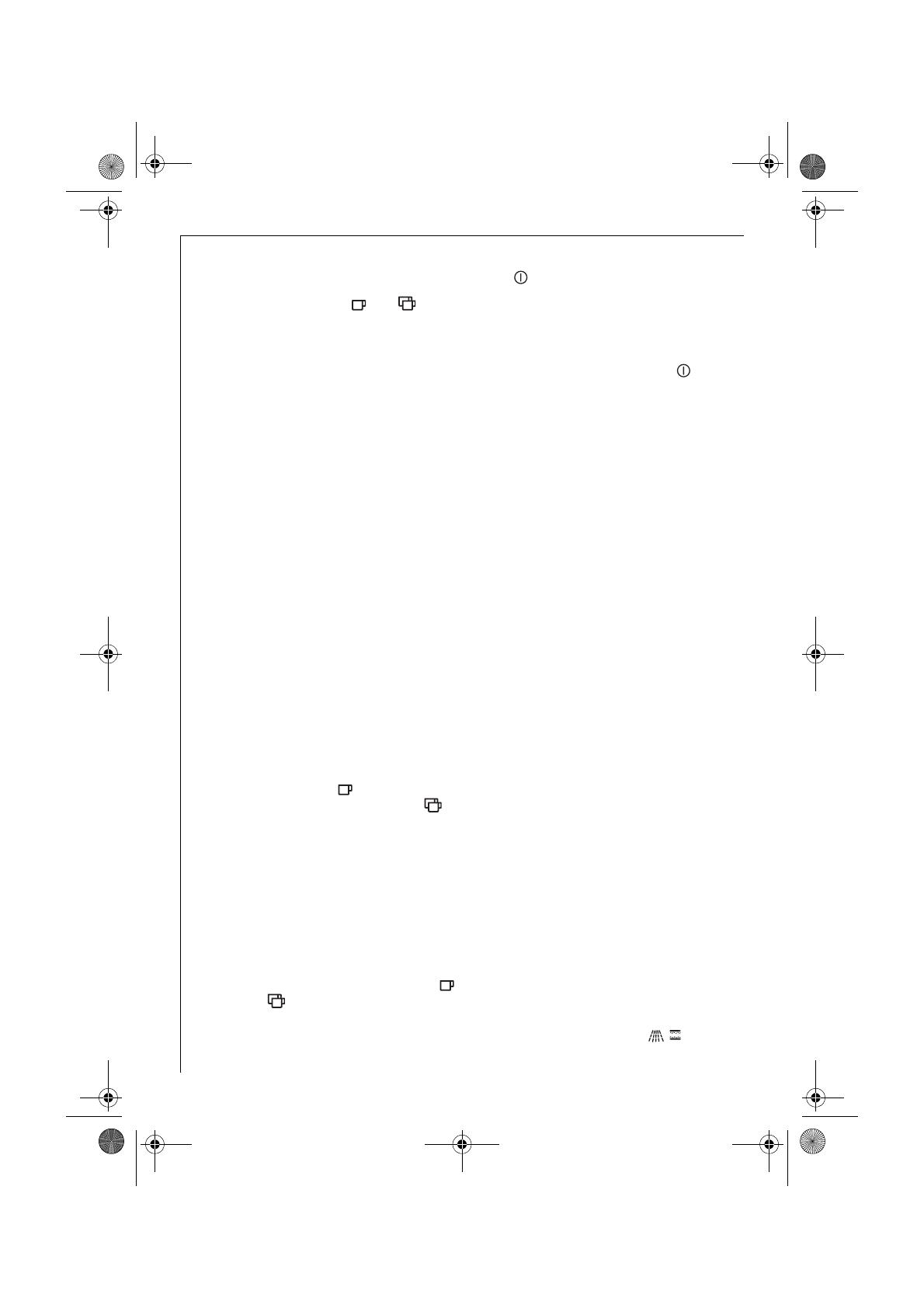
g
82
4 Making coffee with beans
0 Before delivering the coffee, always
make sure that the and lights
are on steady, and that the water tank
and the coffee bean container are full.
0 Adjust the grinding quantity selector
knob (Fig. 9) to set the desired taste of
the coffee.
Turning the knob clockwise increases
the quantity of coffee beans that the
machine will grind, and thus makes the
taste of the coffee stronger. When
using the machine for the first time,
the correct position of the knob can be
found by trial and error. Make sure not
to turn it too far clockwise, otherwise
the coffee will be delivered too slowly
(in drops), above all when preparing
two cups of coffee.
0 Adjust the coffee quantity selector
knob (Fig. 10) to set the quantity of
coffee required.
Turning the knob clockwise makes a
longer coffee. When using the machine
for the first time, the correct position
of the knob can be found by trial and
error.
0 Place one cup under the spouts to
make 1 coffee or 2 cups for 2 coffees
(Fig. 11). For a creamy coffee, lower the
spouts to bring them as close to the
cups as possible (Fig. 12).
0 Press the button (Fig. 13) to make
one cup of coffee or the button
(Fig. 14) to make 2 coffees.
At this point the machine grinds the
beans, runs a short pre-infusion cycle,
a pause and then completes the deliv-
ery.
Once the desired quantity has been
reached, the machine automatically
stops delivering the coffee and dis-
charges the grounds into the special
container.
After a few seconds, when both the
and indicator lights are on again,
another coffee can be made.
0 To switch the machine off, press the
button. (Before switching off, the
machine automatically runs a rinse
cycle: a little hot water will come out
of the spouts and will be collected in
the drip tray underneath - be careful,
to avoid being scalded ). If the machine
is not switched off using the but-
ton, it will switch itself off and run a
brief rinse cycle 3 hours after the last
operation.
3
Note 1: If the coffee is delivered a drop
at a time or not at all, turn the grind-
ing coarseness regulator (Fig. 17) one
click clockwise (see section 5 „Adjust-
ing the coffee grinder“, page 84). Turn
a click at a time until the coffee is
delivered satisfactorily.
1
The grinder setting may be changed
only while coffee is being ground.
Making adjustments to the stationary
grinder can damage the coffee
machine.
3
NOTE 2: If the coffee is delivered too
fast and is not creamy enough, turn
the grinding quantity selector knob
(Fig. 9) clockwise. Proceed by trial and
error to find the correct position of the
knob. Make sure not to turn the knob
too far clockwise, otherwise the deliv-
ery may become too slow (in drops),
above all when making two cups of
coffee. If, after several coffees, the
cream is still not satisfactory, also turn
the grinding adjustment knob (Fig. 17)
one click anticlockwise (see section 5
„Adjusting the coffee grinder“,
page 84).
3
Note 3: Tips on making hotter coffee:
1) If, when the machine has just been
turned on, a short cup of coffee is
required (less than 60 cc), use the hot
rinsing water to pre-heat the cups.
2) If, on the other hand, more than 2 or
3 minutes have elapsed since the last
coffee was made, before preparing
another coffee the infuser must be
pre-heated, pressing the button.
822_949_383 ECS5000_5200_Elux.book Seite 82 Donnerstag, 17. Januar 2008 1:58 01
















